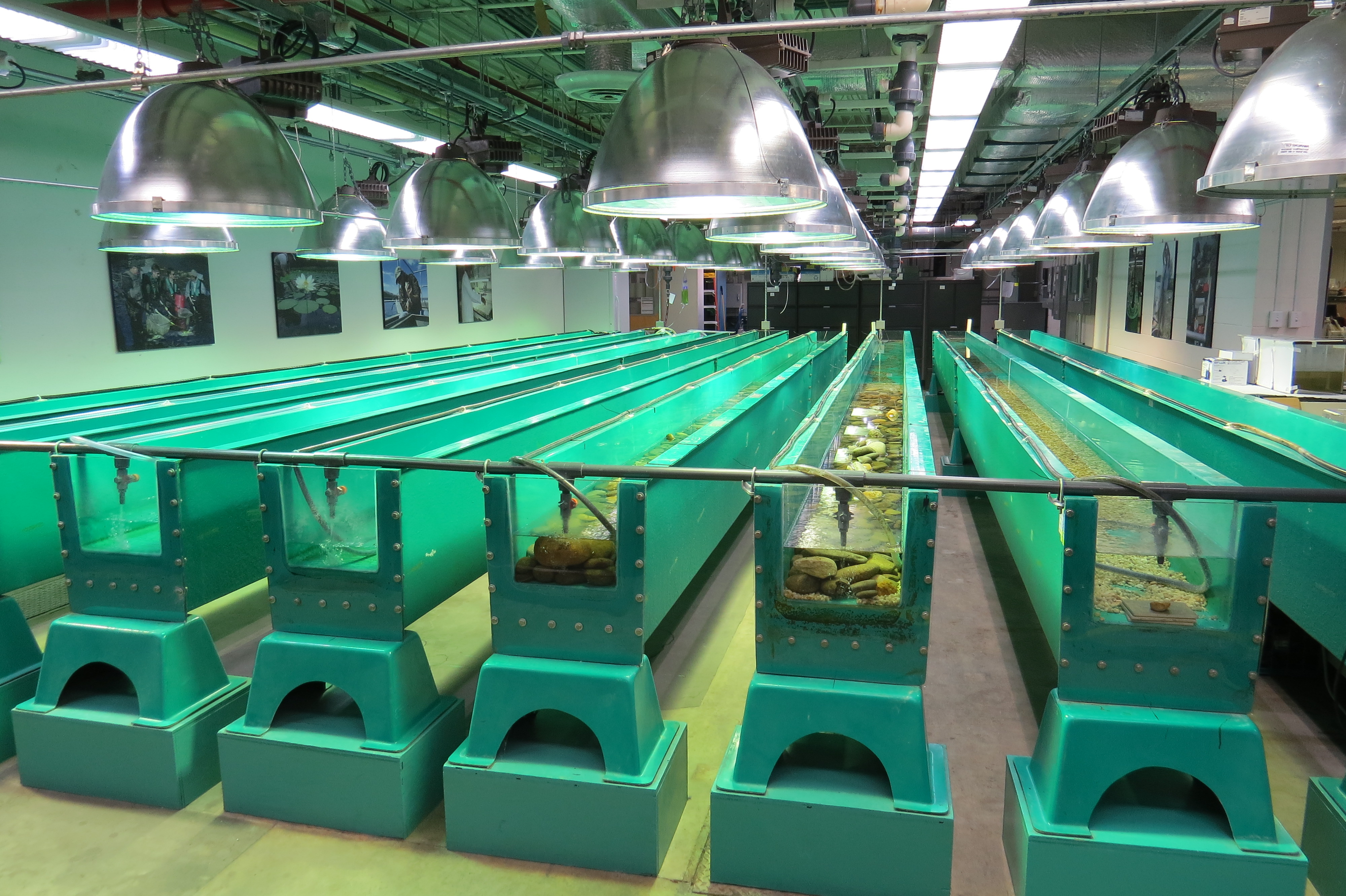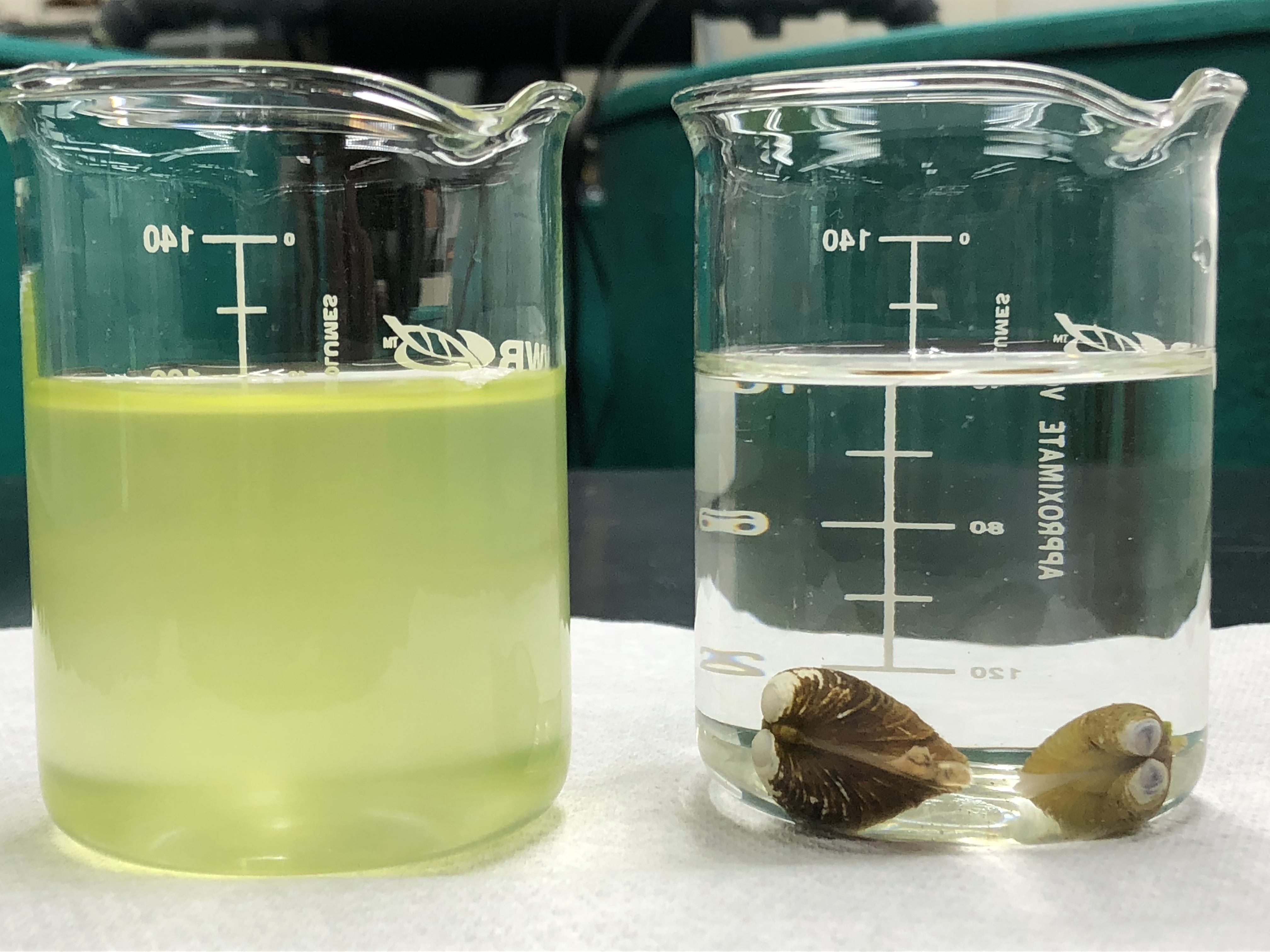New capabilities and equipment recently installed at the Department of Energy's Oak Ridge National Laboratory are bringing a creek right into the lab to advance understanding of mercury pollution and accelerate solutions.
Nearly 9,000 gallons of water drawn from local streams flows through a new system of tanks and piping into simulated stream beds and soil columns in ORNL's Aquatic Ecology Laboratory. The system provides scientists with an unprecedented opportunity to study - in a controlled laboratory setting - the complex naturally-occurring microbial communities that transform mercury into toxic methylmercury in the environment. Using mercury-contaminated stream water also opens new avenues for designing, evaluating and scaling up remediation technologies.
"These new capabilities complement our ongoing studies in environmental toxicology and our work with industry and other partners to develop mitigation technologies," said Terry Mathews, lead for the laboratory's Biodiversity and Ecosystem Health Group. "It is exciting to design new experiments that will help us better understand and address the spread of methylmercury in the environment."
ORNL scientists have been at the forefront of environmental science and ecological research for more than 70 years, including studying legacy mercury contamination from the nearby Y-12 facility.
This local issue has become a global concern as 2,220 metric tons of mercury are emitted worldwide each year, according to the Environmental Protection Agency. Much of this mercury gets washed into waterways where microbes transform it into the potent neurotoxin methylmercury, which builds up in the food chain, accumulating in fish and shellfish that people consume.
Researchers at ORNL are examining ways to contain mercury, remove it and disrupt its transformation in the environment.
Simulated streams, real results
One of the keys to both mercury methylation and its accumulation in fish is periphyton - communities of blue-green microalgae and microbes that form films on rocks and other objects in streams. These biofilms harbor small oxygen-deficient pockets where microbes convert mercury into methylmercury. The periphyton is then eaten by small fish and invertebrates, transferring the toxin up the food chain.
Using real stream water means that scientists can access communities of periphyton along with dissolved organic matter and mercury contamination in the water column. One of the early goals of the research is to use these natural seeding communities to grow periphyton on tiles in the laboratory. Scientists will use these tiles in eight 22-meter artificial streams called mesocosms to test the effects of different water chemistry amendments, sorbents or other technologies designed to remove mercury and halt the methylation process.
"The stream mesocosms give us the ability to further test technologies that have been very efficient in a beaker or other bench scale test," Mathews said. "We can get a better gauge of what works and the downstream effects before using prototypes in the field."
Researchers will look at whether the periphyton communities and fish in the mesocosms are affected by these technologies. By measuring the mercury levels in the downstream water along with bioaccumulation rates in fish, they can compare treatments in separate mesocosms to determine which is most effective.
"Studies often focus on only one aspect, such as bioaccumulation," Mathews said. "Having the mesocosms allows us to really examine the effects on ecosystem dynamics."
Testing the waters
Many of ORNL's contaminant studies have centered on the nearby East Fork Poplar Creek, making it one of the longest-studied small streams in the world. Though most of the water flowing through the AEL comes from this creek, scientists are enthusiastic about the flexibility to bring in water from other areas.
Another nearby stream called Bear Creek offers an interesting comparison to East Fork Poplar Creek. Bear Creek has low mercury concentrations in its water but high concentrations in fish. The mercury levels in the fish match those of East Fork Poplar Creek where the concentration in the water is much higher. Scientists are trying to figure out why.
"It's something to do with the methylation dynamics," Mathews said. "If we can understand the difference in methylation potential in those two creeks, that could inform remediation methods for both waterways."
New dynamics, new solutions
The concentration of nutrients such as nitrogen and phosphorous in the water is another factor influencing mercury methylation. Periphyton require nutrients and sunlight to fuel their growth, so scientists are manipulating those environmental factors in experiments to better understand mercury dynamics. Stream water from East Fork Poplar Creek provides a rich basis for this type of study as the stream meanders through agricultural land and near a sewage treatment plant, collecting high concentrations of nutrients as it flows.
"By studying the relationships among the amount of nutrients, periphyton growth and activity, and methylmercury formation, we may find novel ways of lowering mercury concentrations in fish," said ORNL researcher Scott Brooks. "The new lab upgrades provide unique facilities to do these experiments in controlled and reproducible ways using real creek water and sediments before moving to the field."
Much of the mercury in East Fork Poplar Creek is due to interactions with contaminated stream bank soils. A group of scientists led by ORNL's Melanie Mayes is examining the effectiveness of new materials to capture mercury and to contain it in the soil before it erodes or leaches into waterways. The research team is working with engineered materials such as activated carbon, biochar and organically enhanced clays that can be used as sorbents to take up mercury from contaminated waters.
Flowing contaminated East Fork Poplar Creek stream water through columns of sorbent materials in the laboratory will allow the research team to measure how much mercury is captured by the sorbents under near real-world conditions. The group is also testing a new concept for mercury remediation: carbon fiber mats that show potential to reinforce riverbanks and prevent erosion, while simultaneously adsorbing mercury and preventing leaching of mercury into the water.
"Contaminated streambanks are the major source of mercury to the creek, so we want to find materials that can both physically stabilize the streambanks and chemically adsorb the mercury," Mayes said. "Minimizing excavation of contaminated streambank soils will enable effective and environmentally-friendly cleanup of the stream."
Exploring natural remedies that remove mercury from streams before it can be methylated is another avenue of study. Native freshwater mussels, for instance, can filter mercury from water and remove the dissolved organic matter that affects mercury dynamics. Introducing these species affects the food web as well, preventing mercury accumulation in fish but also potentially affecting the ecosystem in other ways. Using the stream mesocosms allows researchers to investigate ecosystem effects before doing field deployments.
"Our research with mussels is in the early stages, but it shows promise as a less intrusive method of mercury remediation," said Mathews. "We are hoping it could be a win-win for water quality and biodiversity as native mussel populations have been in decline."
The new equipment, capabilities and ongoing research at the AEL are funded by the DOE Oak Ridge Office of Environmental Management and UCOR, DOE's primary cleanup contractor for the Oak Ridge Facility, to facilitate development of cost-effective mercury remediation technologies. ORNL research with native mussels is conducted in cooperation with the Tennessee Wildlife Resources Agency.








